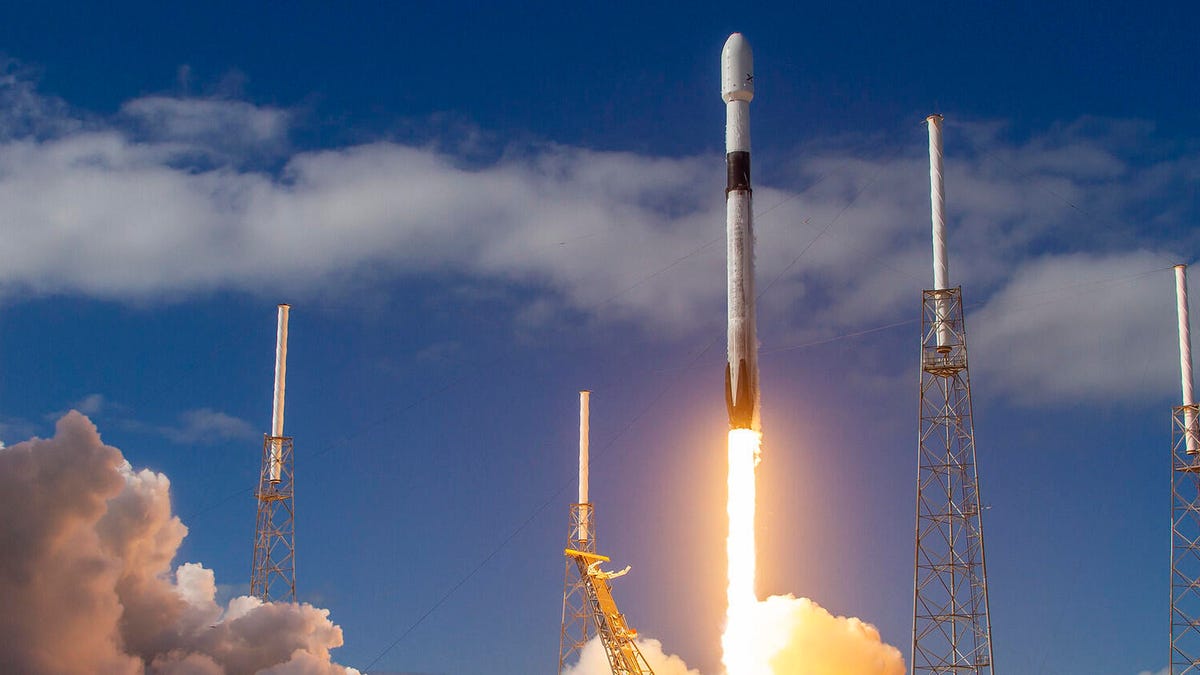SpaceX sends 60 more Starlink rockets to orbit, nails the landing
Elon Musk's planned broadband constellation hasn't been stopped by the coronavirus pandemic.

The Falcon 9 launch in November 2019 carried 60 Starlink satellites.
While much of the planet is shut down due to the coronavirus pandemic, it's still business as usual in low-Earth orbit, where the nascent SpaceX Starlink broadband constellation now numbers over 400 satellites.
A Falcon 9 rocket blasted off from Kennedy Space Center in Florida at 12:30 p.m. PT on Wednesday with the payload in its nose. Although the mission is dubbed Starlink 6, it's the seventh group of 60 orbiting routers to be sent into space.
SpaceX aims to have more than 1,000 of its controversial satellites in orbit by the end of the year and has permission from the Federal Communications Commission to launch over 12,000 in total.
Watch Falcon 9 launch 60 Starlink satellites → https://t.co/gtC39uBC7z https://t.co/islIJwNrL1
— SpaceX (@SpaceX) April 22, 2020
A few minutes after the launch, with the second-stage booster and batch of satellites headed toward a deployment point in low-Earth orbit, the first-stage booster returned to Earth for a successful landing right on the bull's-eye on the droneship Of Course I Still Love You in the Atlantic Ocean.
A pair of ships equipped with giant nets will later attempt to catch the two halves of the nose cone, or fairing.
The first stage of the Falcon 9 rocket launched three times before Wednesday, most recently for the fourth Starlink mission. The nose cone is also recycled from a previous mission.
You can watch the entire mission via the YouTube embed below. The next Starlink launch is tentatively set for sometime in May.

